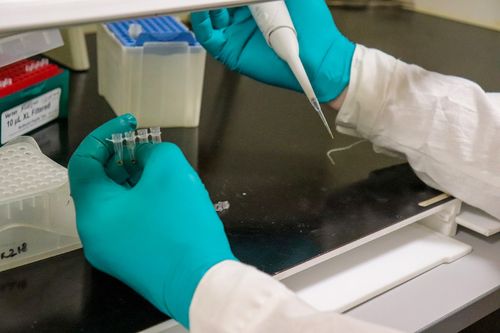– A known fact is that the risk of glaucoma is multiplied in regions with pronounced seasonal variations in light availability. In our country, this problem is more than just topical. Changes in the external environment cause internal changes, in particular changes in eye retina. The organism accommodates to them by mean of molecular machinery termed the “biological clock”. It comprises a whole orchestra of genes – not only the ones related to circadian rhythms but also those responsible for protein synthesis, carbohydrate and lipid metabolism, – explains one of the authors of the study Sergey Kolomeychuk, Senior Researcher at the Genetics Laboratory of the Institute of Biology KarRC RAS.
Lipids, which can be either in solid state (fats) or in liquid state (oils), play an essential role. Their breakdown generates energy; they perform a tissue protective function, participate in signal transmission between neurons and in other processes. An excess of certain fats can trigger the formation of atherosclerotic plaques and thrombosis have a fatal effect.
The research team studied the dependence of lipid variations in glaucoma patients on the loss of eye retinal cells. To do so, they took blood tests from 114 patients three times a day in clinical settings. The parameters studied were total cholesterol, low-density lipoproteins (they are considered to be a causative agent of cardiovascular diseases and are therefore called “bad” cholesterol), high-density lipoproteins (“good” cholesterol), and triglycerols, which are responsible for energy production.
The measurement permitted scientists to trace lipid metabolism disruptions in patients with progressing glaucoma. The connection was the most conspicuous where the loss of retinal neurons was 15 or more percent. A more specific finding was that the levels of “good” cholesterol and triglycerols rose in morning hours, whereas the levels of total and “bad” cholesterol grew in evenings.
– Evening build-up of the lipid is especially critical. As a rule, the person is already resting; fats are not utilized and, hence, not recycled. The organism has to store them up as reserves. The lipid metabolism is thus affected with a risk of negative consequences, – Sergey Kolomeychuk remarked.

The study is carried out under an RFBR grant under the leadership of Professor Denis Gubin from the Biology Department of the Tyumen Medical University. In addition to colleagues from the Tyumen University, the project involves scientists from the Helmholtz National Medical Research Centre of Eye Diseases, Tomsk National Research Medical Center RAS, and Karelian Research Centre (KarRC) RAS. Sergey Kolomeychuk was in charge of the genetic component of the study. He analyzed how the results were related to the CLOCK gene – a key circadian rhythm gene.
– This gene was discovered in 1997 and has been repeatedly chosen as target for pharmacological correction. It is related to the lipid metabolism and its defects lead to rapid weight gain. The CLOCK gene is polymorphic, i.e., having several single-nucleotide substitutions. One of them, in the terminal untranslated region of the gene, proved to be related to elevation of the cholesterol level. We’re talking of a homozygous major allele (TT). It was carriers of this genotype that demonstrated an evening elevation of “bad” cholesterol, – the scientist tells.
The researcher explains that this finding now needs to be verified using a larger patient sample. The resultant information can potentially open new opportunities for personified treatment of glaucoma patients. In this case, a preceding genetic analysis and identification of the gene variant serve as a ground for corrective therapy to reduce the lipid level.
Scientist’s advice
Awareness of the detrimental effect of circadian rhythm disturbance on the lipid metabolism is important not only for those suffering from chronic diseases. Weight gain, cholesterol elevation and other problems can appear also in relatively healthy people who ignore the sleep-wake schedule. To stay healthy in the long term, keep proper hours, have at least 7 hours of sleep per day, try to go to bed by 23:00 at latest. Before going to bed, refrain from having carbohydrate-rich foods, alcoholic and caffeinated drinks, don’t use gadgets, and avoid bright sources of light at night.




